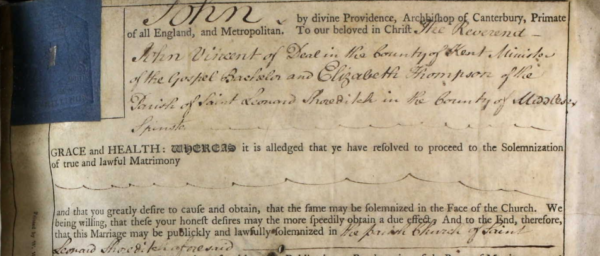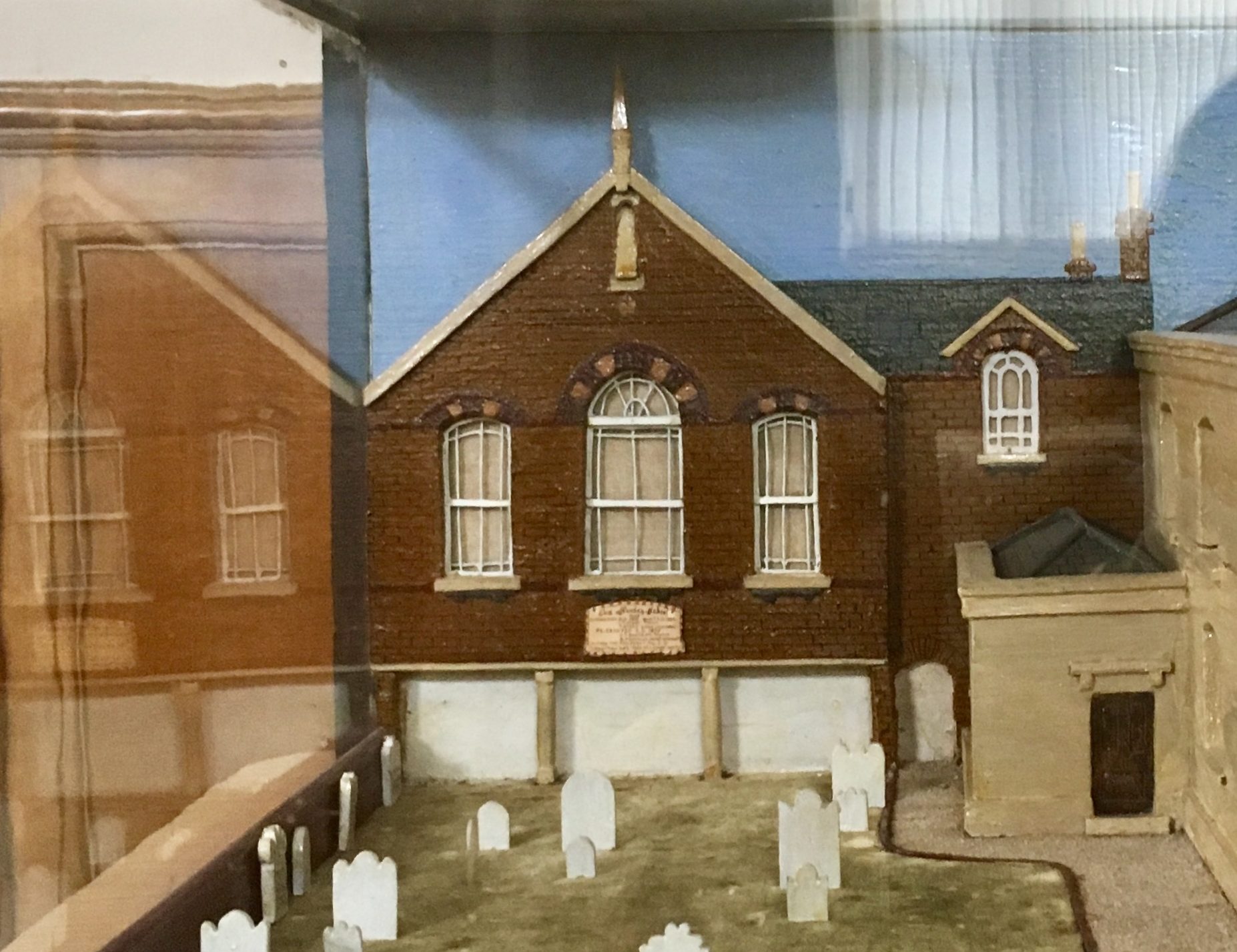John Vincent Senior
126 Lower Street
New Street
Occupation: Minister of the Congregational Church
According to the 1841 census John was not born in Kent so it is an educated guess that he was born and baptised in 1776 in the parish of All Hallows The Great in London which once stood on what is now Upper Thames Street. Given that the father’s name on this baptism record is also John and that our John Vincent’s second marriage took place in the nearby All Hallows Church on Lombard Street, London makes this guess at least a reasonable probability.
Why John decided to leave the Church of England and train to be a minister in the Congregational Church is not known but we find him listed in The American Quarterly Register. This publication lists the Congregational and Presbyterian ministers, or as many as it could find, where they resided and the year and college that they trained at. John, we are told trained at Highbury College from 1797 under the Reverends R Simpson and G Collinson. By 1800 John was on supply at Deal’s Old Congregational Chapel known then as the ‘Meeting House’. He was finally ordained on 14 July 1802.
Highbury College at the time John attended was in Hoxton in the East End of London near Shoreditch which is where John must have met his first wife Elizabeth Thompson. They married by license in St. Leonard’s, Shoreditch on the 16 April 1801. John, their first child, was born in Deal on 15 April the following year.
The couple were then living in 125 Lower Street and we have a very good description of the property as it was in July 1804 when the Freehold went up for auction.
A William White may have bought the Freehold as in 1826 it is again up for sale due to his bankruptcy in connection with the failing of the bank owned by him and his copartners John May, James Wyborn and John Mercer. William White was one of the chief benefactors that enabled the building of the new Congregational Chapel in 1803.
Throughout their marriage, Elizabeth seemed to be almost permanently pregnant having nine children in twelve years. Sadly, John, their first child had died soon after his birth in 1802. Elizabeth herself died on the 11 October 1815 leaving John with eight young children and a parish to care for.
Elizabeth Cole, John’s second wife, may have been a family friend. There is an Elizabeth Cole being baptised in 1788 in the parish All Hallows and registered as a non-conformist but this, like with Johns baptism, is just guesswork.
They too were married by license on the 18 July 1816 at the church of All Hallow on Lombard Street, London. The marriage register, however, appears to be incorrect as it says John is ‘of this parish’ and Elizabeth of Deal!
The couple continued to live in the Lower Street house and go on to have four children there. Mary their eldest is possibly named for Elizabeth’s mother. Then in 1826 the property, as already explained, goes up for sale. John then moves with his family to New Street.
In 1839 Elizabeth dies while she is staying on the Isle of Wight at Cowes. Why she is there is not known.
John continues to live and work in Deal until his own death in 1848. It must be assumed that he was buried in the burial ground of the church that he saw being built and preached at for over forty years. The stone plaque to the left of the main entrance of the former new Congregational Church now called Landmark Centre bares his name. This was once on the Sunday School Building of the Congregational Church.
A model of The Congregational Church was made by James Richard Apps who had married John’s grand daughter Martha in 1868. More images of the model can be found on his page.



